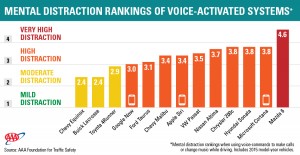Tag Archive: Safe driving
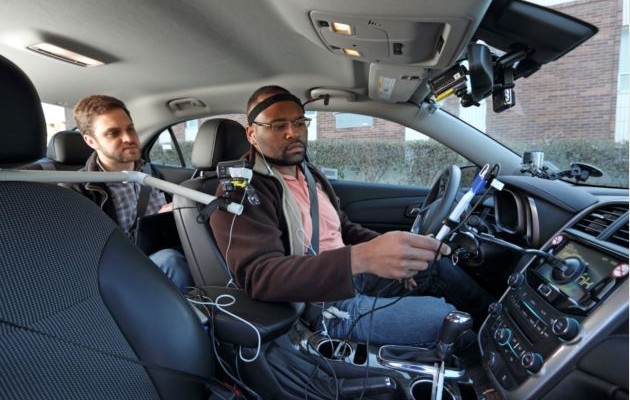
Hands Free Distracts Drivers Long After Hanging Up
November 6, 2015
We’ve written before on the fact that hands free communication devices are no safer or any less distracting for drivers than hand held devices; now there’s evidence that shows they’re still distracting, even after hanging up.
A new study conducted by the University of Utah for the AAA Foundation for Traffic Safety (AAA) shows that it can take up to 27 seconds before the brain can refocus on the task of driving after hanging up on a hands free call or text message. To put that into context, over a period of 27 seconds, a vehicle traveling at just 25 mph will cover approximately 992 feet or the length of three football fields before the driver is able to fully concentrate on the mental task of driving.
The University of Utah conducted two different studies for AAA. The first studied the distraction level of using hands free voice commands to dial phone numbers, call contacts, select music, and send voice texts with Microsoft Cortana, Apple Siri and Google Now. The study showed that, while Google Now was a bit less distracting, all three systems were highly distracting to the drivers.
The second study looked at voice dialing, contact calling, and music selection using in-vehicle “infotainment” systems installed in ten different 2015 model year cars. The study found that three of the systems were moderately distracting, six were rated as highly distracting, and the system installed in the Mazda 6 was found to be very highly distracting.
The tests were conducted using volunteers ranging in age from 21 to 70. The volunteers were accompanied by a researcher as they drove at 25 mph on a 2.7 mile route in a Salt Lake City neighborhood. Each volunteer wore a head mounted device that flashed a red LED light every three to five seconds just to the left of the driver’s vision. Each time they saw the light, drivers would note it using a thumb mounted button. Cameras and other sensors mounted in the vehicle recorded how much time the driver’s eyes were on the road, mirrors, or dashboard. Drivers also participated in a survey to record their perceived attention span during and after the hands free activities. Before conducting the tests, the drivers were allowed to take the car home for a five day period to learn and try to become proficient with the systems.
Most people felt that their full attention was restored after hanging up but the data showed that wasn’t the case. The researchers feel that high tech manufacturers are rolling out the systems too early. There hasn’t been enough time devoted to perfecting the systems and verifying their safety.
Read more: Up to 27 seconds of inattention after talking to your car or smartphone
Photo and graph credits: AAA Foundation for Highway Safety

Watch for Deer On The Road
October 21, 2015
It’s that time of year again when it’s important for drivers to watch for deer on the road. The term “deer” also includes moose, elk, and caribou in those parts of the country where they live.
Deer tend to congregate along the sides of the roads during the fall mating season from October through the end of the year and are mostly encountered at dawn and dusk when it’s hardest to see them.
According to the Washington State Department of Transportation, your chances of hitting a deer are greatest:
- When there aren’t a lot of big trucks on the road. Researchers feel that the presence of large trucks on the road lead car drivers to be more cautious and alert. The noise created by the trucks may also help to drive the deer away.
- When the speed limit is above 50 mph, giving drivers less time to react.
- When there are fewer lanes.
- When the median is 6 feet wide or narrower.
Your chances of being involved in a collision with a deer on the road also depends on the state in which you live. According to data compiled by State Farm Insurance, a Florida driver’s chances of hitting a deer are 1 in 930 compared to West Virginia where a driver has a 1 in 44 chance of an encounter.
Most often, your first hint of a deer on the road will be the light reflected from their eyes.
Once you see one, slow down. You can count on more deer being close by but you can’t count on how they will behave as your vehicle draws near..
Since deer tend to forage at night, their eyes have evolved to gather more light. Once those large eyes are hit by the beams from a car’s headlight, it results in an explosion of light that blinds and immobilizes the deer (the deer in the headlights effect).
Honking your horn may frighten the deer and cause it to run but it could just as easily run into the roadway. Honking your horn is only a good choice if you’re driving slowly enough that a collision won’t do much damage.
If a deer runs into the road, don’t give into the temptation to swerve in hopes of avoiding it. Swerving may cause you to lose control of your vehicle leading to an even worse crash. Sadly, it’s often a safer choice to hit the animal that has run out into the road rather than swerving to avoid it.
In 2013, four drivers were killed and 465 were injured in crashes involving animals on Florida roads. Nationwide in 2013, according to the Insurance Information Institute, there were 191 deaths caused by collisions with animals.
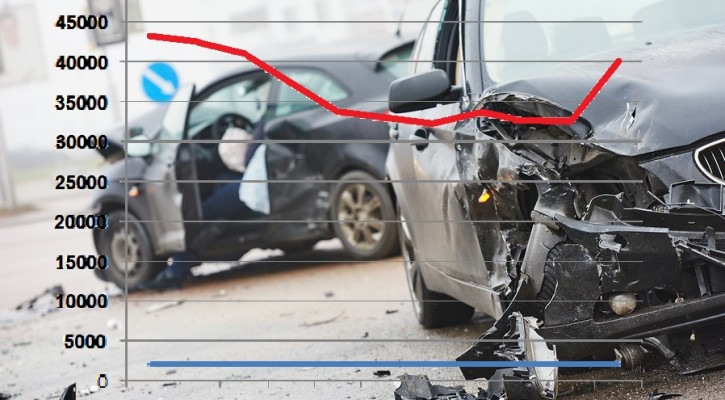
Motor Vehicle Deaths Are On The Rise
August 18, 2015
A new report by the Statistics Department of the National Safety Council shows that motor vehicle deaths are on the rise and the numbers have increased significantly over the past year. The report covers the first six months of 2015 and shows a fatality increase of 14 percent over the same period in 2014.
According to the report, there were 18,630 motor vehicle deaths in the US between January and June of this year. The report’s authors say that, if the trend continues for the rest of the year, the total number of motor vehicle deaths could exceed 40,000 for the first time in eight years.
We normally quote traffic figures from the National Highway Traffic Safety Administration (NHTSA) and the figures between the National Safety Council and NHTSA will differ because NHTSA only counts traffic deaths that occur within 30 days of the crash while the National Safety Council counts both traffic and non-traffic deaths that occur within one year of the crash. Another difference is that NHTSA normally takes more than a year to compile and publish its data so there won’t be any data for 2015 for some time to come. However, early 2014 figures published by NHTSA in January show a possible trend to support the National Safety Council figures.
According to NHTSA data, the rate of motor vehicle deaths in 2014, statistically, showed no real change from the 2013 death rate. While there were 44 fewer deaths in 2014 than in 2013, that only represented a change of 0.1%. The death rate for the first three quarters of 2014 showed a small decline but the last quarter of 2014 showed an increase of five percent over the same quarter in 2013.
The National Safety Council researchers feel that the increase in motor vehicle deaths are likely tied to lower gas prices and the growing economy. In 2008, when the economy started to crash, motor vehicle deaths fell by ten percent over the previous year, according to NHTSA figures. After a high of 43,443 motor vehicle deaths in 2005, the death rate fell to a low of 32,367 deaths in 2011 at the height of the recession; a difference of 34 percent.
Many traffic safety experts have warned that one indicator of a strengthening economy would be an increase in motor vehicle deaths. The improved economy along with low gas prices mean more people are on the road both for work and for pleasure.
One saving grace in all of this data is that newer cars are much safer and, while the number of crashes and injuries may go up, the number of deaths should be much lower than they might otherwise be.
Read more: Motor-vehicle deaths up 14 % in first six months of 2015
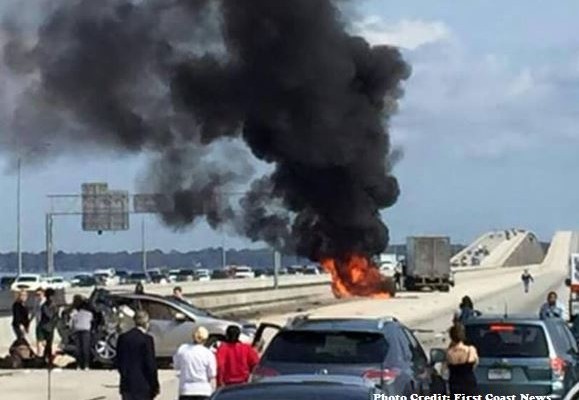
Careless Driving – Not Design – Responsible For Bridge Crashes
August 3, 2015
After several horrible crashes on Jacksonville Florida’s Buckman bridge, the Florida DOT conducted a study that found that careless driving and speed were responsible for crashes on the bridge, not the bridge design.
The call for the study came after two crashes in the past year made people question the safety of the large span across the St. John’s River. In the first crash, a small truck was sent over the guardrail and into the river. A Navy and police diver search located the driver’s body several hours later. In another crash in March of this year, a disabled SUV was struck by a semi and burst into flames, killing a mother and her three children.
The pickup crash into the river was not the first time a vehicle had gone over the railing into the river and the latest crash caused local residents and officials to question whether the railings on the bridge were high enough. The Florida Department of Transportation (FDOT) was tasked with conducting the study.
In the study, released by FDOT last week, the researchers looked at the previous five year history of crashes, both on the bridge and stretches of I-295 approaching each end. The researchers concluded that the structure of the eight-lane, three mile long double span met all safety requirements and didn’t contribute to the crashes, either on or adjacent to the bridge.
Instead, the researchers blamed careless driving and high speeds for the crashes. In their study, the researchers monitored average speeds throughout the day. In spite of the posted 65 mph speed limit, the researchers said that drivers drive at an average of 72 mph on the bridge.
Careless driving and distracted drivers also play a big part in the crashes on the bridge. In the crash that sent the pickup truck into the river, police reported that a distracted driver swerved to avoid hitting the car ahead and clipped the pickup truck sending it spinning over the bridge railing.
In the crash involving the family, as a driver behind the stalled SUV slowed to a stop, it was hit from behind by the driver of a large truck. As the first vehicle spun out of the lane, the truck plowed ahead and hit the SUV sending it into the guardrail where it burst into flames.
We have written before that there is no such thing as a motor vehicle “accident.” Accidents are something we have no control over. Motor vehicle crashes are caused by drivers who make a fatal error, such as; speeding, driving under the influence, or not paying attention to the road ahead.
Speed causes problems because a speeding driver has very little time to react when encountering a problem in the road ahead. Speeding also increases the impact forces in a crash.
A bridge like the Buckman carries a tremendous amount of traffic and, along with speeding drivers, there are slow drivers (probably on a cell phone) and drivers weaving in and out of lanes. The bridge has a high hump in the middle to allow for boat traffic and, if there’s an obstruction or problem ahead, a speeding, distracted driver won’t realize it until it’s too late. If ever there was a time to ignore the distractions and concentrate on the road ahead, it’s on a bridge like this one.
Speeding and distracted drivers, along with all the other drivers are trapped within the confines of the bridge and, should a problem occur ahead, there’s no room to escape. Drivers need to maintain a safe following distance of at least two seconds and watch, not only at what’s directly in front, but also as far down the road as possible. When driving over the hump, drivers should anticipate the possibility of problems ahead and give themselves extra room to maneuver or stop.
The only recommendations made by the researchers were for greater enforcement of the speed limit and for electric signs ahead of the bridge to warn of crashes or stalled vehicles on the bridge.
Read more: FDOT releases findings on Buckman Bridge crashes
Photo credit: First Coast News
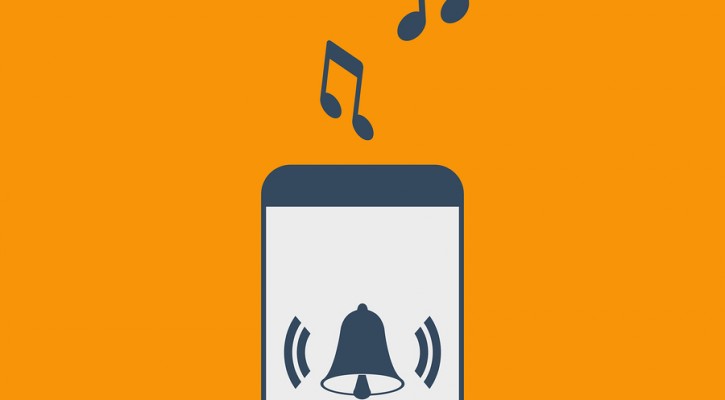
Cell Phone Notifications Are A Distraction Too
July 23, 2015
We all know that talking on a cell phone or reading and sending text messages while driving is a major distraction for drivers but it turns out that just receiving notifications are distracting too, even if the phone calls or texts aren’t answered or read.
This finding was described in a study conducted by researchers at Florida State University (FSU) and published in the Journal of Experimental Psychology: Human Perception and Performance.
To conduct their study, the FSU researchers had volunteers participate in a computerized exercise to determine their ability to concentrate and complete assigned tasks. Once that test had been completed and the results recorded, the volunteers were given the test again. In the second test, the volunteers were randomly assigned to three groups; no notifications, call, or text.
During the second exercise, the researchers called or sent text messages to the assigned volunteers. The volunteers weren’t aware that the calls and texts were part of the study or that the notifications were generated by the researchers.
The results showed that, even though they didn’t respond to the calls or texts, those volunteers who heard or felt the vibrations from the call or text notifications made more mistakes on their computerized tasks than those who didn’t receive any notifications. The results showed that, among those who received a notification, their chances of making a mistake were three times greater than those who didn’t receive any notifications.
According to the researchers, the study shows that the notifications were enough to distract an individual from concentrating on the task at hand. Comparing their data to other studies on the subject, the researchers concluded that just receiving notifications can be as distracting as actually answering the phone or a text.
While not tied specifically to driving, the study shows that drivers, especially those who may find themselves in situations where their concentration is needed most (construction zones, narrow roads with heavy traffic, etc.), could possibly be distracted enough by phone notifications to make a critical mistake on the road.
For drivers, the best bet is to turn the cell phone off while driving.
Read more: Cell phone alerts may be driving you to distraction

